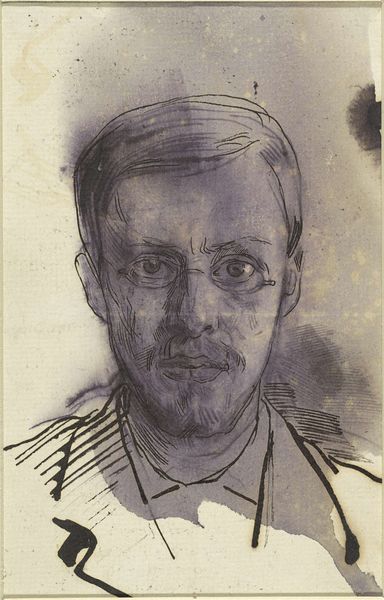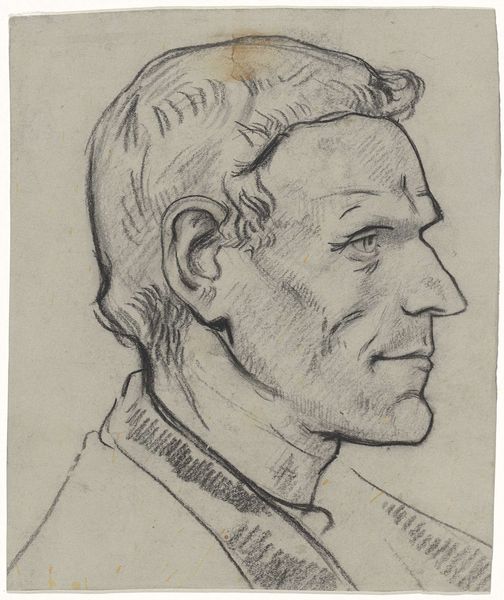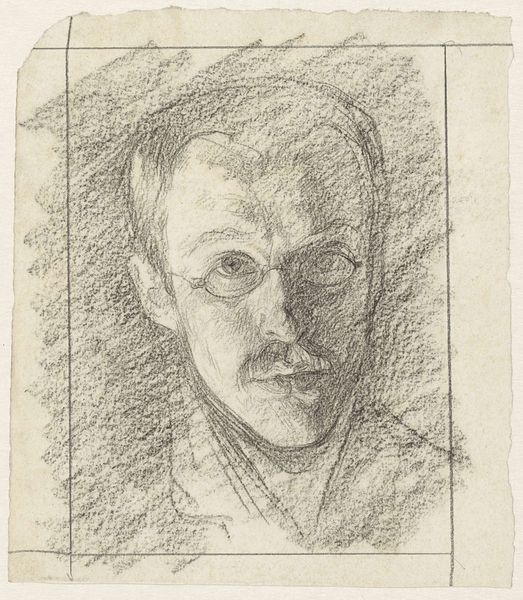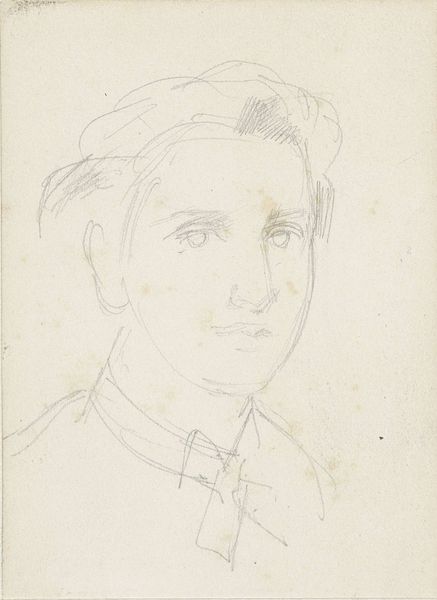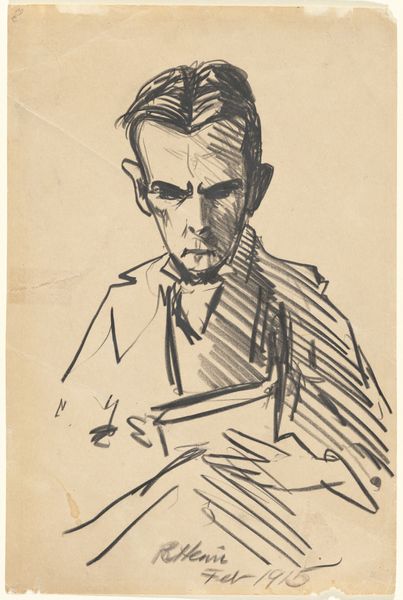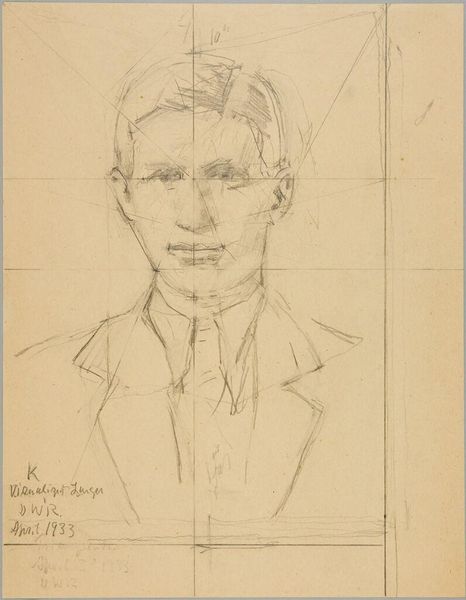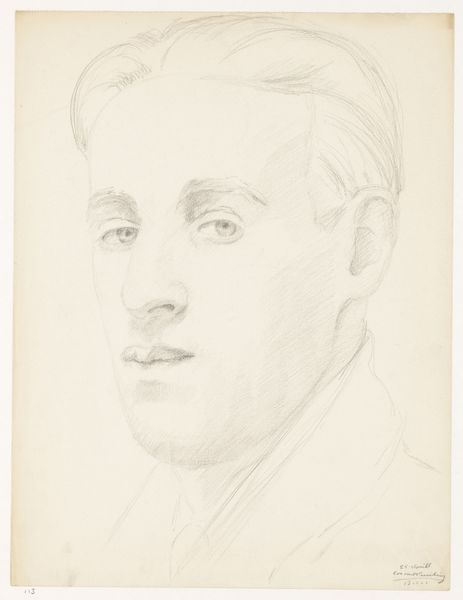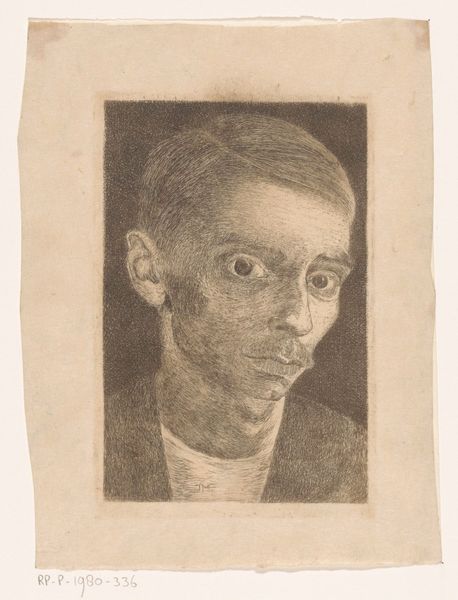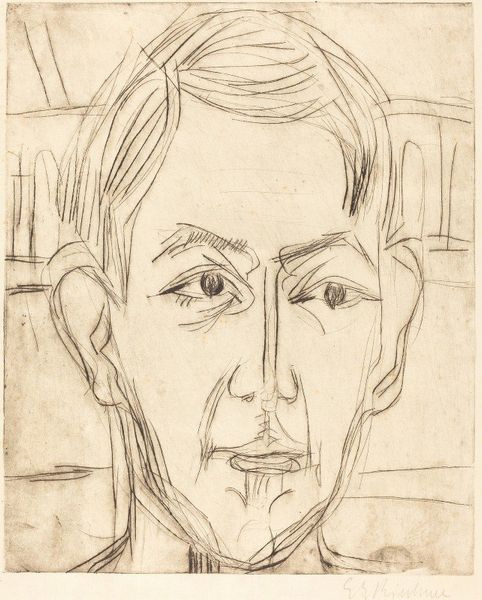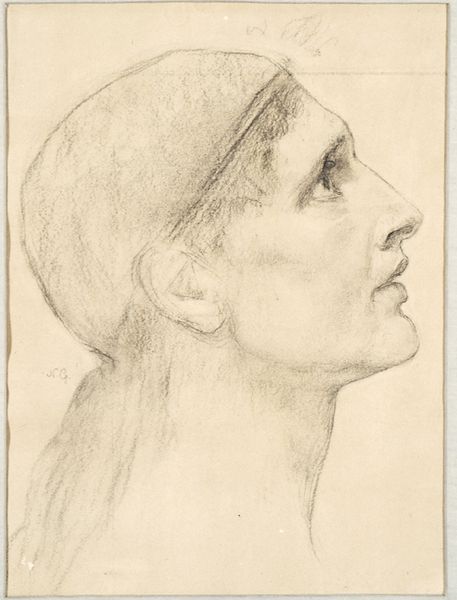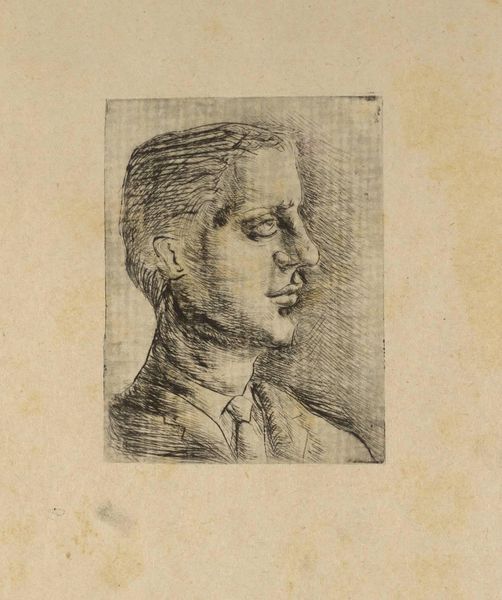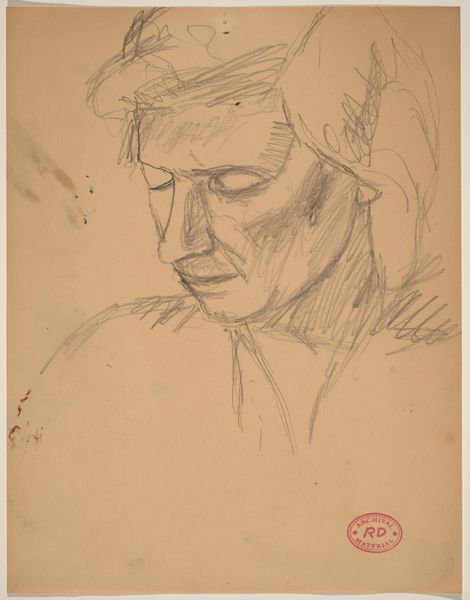
Copyright: Public Domain: Artvee
Editor: So, here we have Richard Nicolaüs Roland Holst's "Portret van de houtsnijder B. Essers," a pencil drawing from 1919. The sharp, almost severe lines of the portrait juxtaposed against the reddish background creates a striking contrast. What do you see when you look at this piece? Curator: What immediately strikes me is the explicit referencing of craft. Roland Holst situates Essers, the woodcarver, within his profession. Not only is he named “de houtsnijder”—the woodcarver—in the inscription, but the hand holding the carving tool underscores his identity as a craftsman. We might consider how this elevation of craft speaks to broader cultural anxieties of the time, particularly after the industrial revolution. Editor: That’s fascinating! So, this image becomes more than just a portrait, it becomes a statement? Curator: Precisely. Think about the social context: After World War I, there was a renewed appreciation for traditional skills, for handmade objects that felt authentic in contrast to mass-produced goods. This portrait then, becomes a valorization of skilled labor, perhaps even a subtle critique of industrialization's alienation of labor. Consider too the political implications: who gets represented and how? Is this a heroic portrayal of a worker? Or something more complex? Editor: So by choosing to portray Essers with his tool, Roland Holst isn’t just depicting a man, but also celebrating, or maybe even idealizing, a certain type of work and the values associated with it. It's like imbuing this profession with cultural significance! I'm beginning to understand the image from a historical viewpoint. Curator: Indeed, the pencil itself— Roland Holst's own tool —becomes part of that commentary, doesn’t it? It’s fascinating how seemingly simple choices about representation can carry significant weight when understood within their socio-historical framework. Editor: Thanks, I’ll definitely remember this when thinking about portraiture! Curator: Absolutely, and hopefully, it encourages a deeper understanding of the political life of images.
Comments
No comments
Be the first to comment and join the conversation on the ultimate creative platform.
